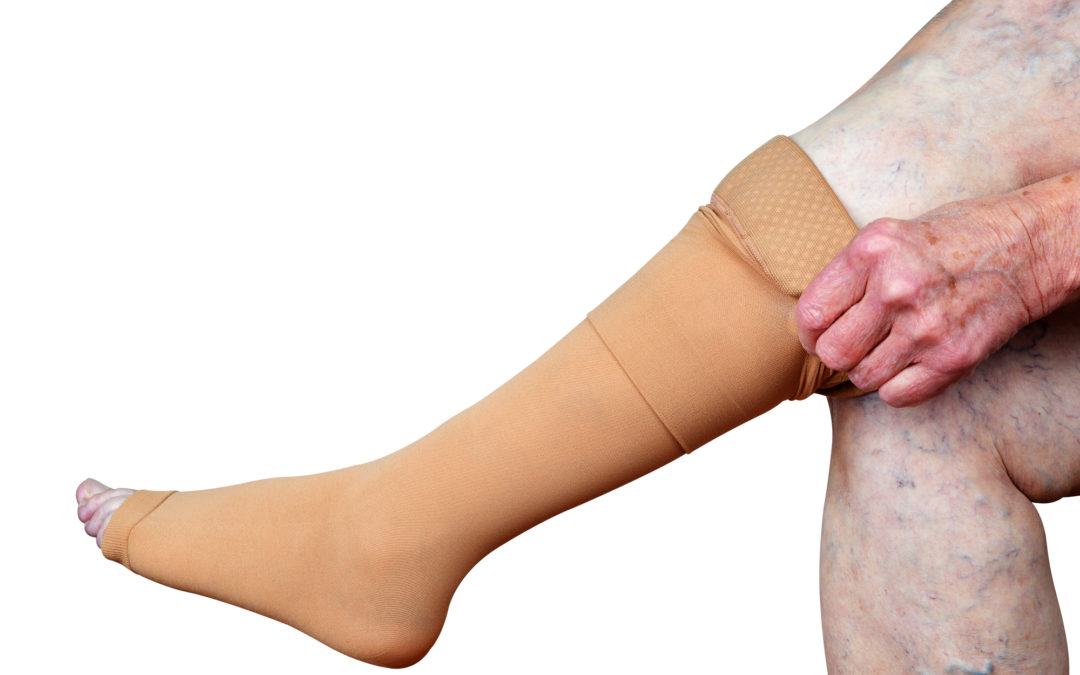A varicose vein is a very visible vein just beneath the surface of the skin that appears swollen, purple or dark red. These occur when the blood flow in a vein is not flowing properly due to a malfunctioning valve. Most often these veins are present on legs and feet because they are furthest from the heart, which pumps the blood throughout a body.
Compressions socks have long been used to help reduce the appearance and pain that can be associated with varicose veins.
How do Compression Socks Work?
Compressions socks apply constant pressure to the legs, which helps blood flow properly back toward the heart. This improves circulations and helps to eliminate some symptoms of varicose veins.
This is not a new method by any means. It is said that Roman soldiers often wrapped their legs with leather straps to help with circulation during tedious marches. Gratefully, compression socks have come a long way since the Roman ages in effectiveness and comfort.
Recent designs put more pressure near the ankles and feet, keeping more prominent blood flow throughout the entire leg.
How Many Types Are There?
Different kinds of stockings or socks will apply different levels of pressure. The three main types are support pantyhose, compression socks available to the general public, and prescription compressions stockings.
Pantyhose are the least effective and can be useful if replaced often. They offer the least amount of support but will work fine for someone whose symptoms are less prominent.
Compression socks from Walmart or a drug store pharmacy provide more pressure and support than pantyhose. They come in a range of sizes and manufacturers. This is a great option for the majority of people. They work well if used properly and replaced every 2-6 months.
Prescription compressions socks offer great support and are generally prescribed after a surgery or varicose veins are removed. A doctor can fit them to meet your needs, or suggest thigh high socks that cover the full leg. This helps to prevent clots after surgery and relieve symptoms. These can be especially helpful for patients that have undergone knee replacement surgery.
Do Compression Socks Really Improve Symptoms?
Studies as recently as 2018 show that wearing compressions socks with adequate pressure help reduce aching, swelling, and pain within one week of consistent daily wear. Wearing socks during the day helps with circulations while sitting or standing for long periods of time.
Other studies suggest that after six months of wear patients will see significant changes in controlled swelling, especially during pregnancy. Particularly at night, patients who elevate legs and/or wear compressions socks saw improvement.
What Do I Need to Know About Compressions Socks?
- Make sure your skin is dry and clean before putting on a pair of compression socks. They can be difficult to pull on if you recently applied lotion or have overly dry skin.
- Circulation is important and is the goal. However, take care not to wear socks too long or too tight. This can damage nerves in legs and cause irritation, rashes or swelling. Check your legs and feet often for any irritation or rashes. Ask someone else to help check your legs if you cannot see them, or use a mirror.
- Compressions socks will not eliminate varicose veins, but they will most likely help with symptoms.
- Doctors recommend replacing socks every 2 to 3 months to ensure they are of good quality and working effectively.


Recent Comments